Transatlantic Race: The slow game
Published on June 27th, 2019
(June 27, 2019; Day 3) – The conditions on the open Atlantic Ocean are far from white knuckle, but the tactics playing out in the Transatlantic Race 2019 are never more interesting.
It’s perhaps due to the lack of screaming conditions that the action is so compelling. Rather than dodging waves and squalls, the fleet is scampering around light patches while setting up for the effects of the Gulf Stream.
At the head of the fleet is the supermaxi SHK Scallywag, skippered by Australian David Witt, which seems to have sailed itself into a corner from which returning is going to come at a hefty price.
At today’s 1530 UTC position report, some 48 hours after the race start, SHK Scallywag was about 170 nautical miles due west of the waypoint A2 marking the southwestern corner of Point Alpha, the ice limit zone. SHK Scallywag was 146 nautical miles north of Wizard on a bearing of 338, but was making 14.6 knots boatspeed on a heading of 156 degrees.
That has put David and Peter Askew’s Wizard, the Juan Kouyoumdjian-designed VO70, into the virtual lead on the water. Wizard is south of the rhumbline sailing at 15.1 knots on a bearing of 106 degrees in south/southwesterly winds around 10 knots. Wizard, however, is far from in the clear as the crew attempts to slither between two patches of light wind.
SHK Scallywag, meanwhile, hopes to get to rhumbline or south of it before tacking back to starboard. But a light patch of wind awaits in that area.
In between the two and slightly astern is Aegir, the 82-footer chartered by Clarke Murphy. Aegir navigator Mike Broughton reports that they’re setting up for the free ride offered by the Gulf Stream.
“There’s plenty of south wind ahead,” said Broughton. “The way we’re working the Gulf Stream is similar to what Wizard is doing. We’ve had up to 2.5 knots of current from the Gulf Stream. We expect the wind’s going to lighten tomorrow. Hopefully it won’t get too light, but it might be time to break out the Code 0. It’ll be some kind of reaching angle tomorrow.”
About 285 nautical miles behind Wizard, on a bearing of 265 degrees, are Eric de Turkheim’s 55-footer Teasing Machine and Jean-Pierre Dick’s 54-footer The Kid. The two boats are sailing within two miles of each other, with Teasing Machine slightly farther south and slightly ahead.
The trick for the two will be to stay on the back end of the front they’re riding or risk falling into lighter winds.
“We’re doing alright,” said Teasing Machine project manager Laurent Pagès. “We’ve been fighting with squalls, rain and big shifts. The low pressure we’ve been in is starting to run away and we’ll get westerly/northwesterly winds out of that. The conditions have been very variable.
“We’ve been facing some electrical issues, but hopefully that’s sorted now. We’re within in sight of The Kid. JP (Jean-Pierre Dick) made an early move to position south for the low pressure. We’re not that sure about that call just yet, but at some stage we thought it would be good to get low.”
In the middle of the racecourse near rhumbline, the “Group of Six” continues to sail in close proximity to each other. The group includes Giles Redpath’s Pata Negra (just south of rhumbline), Peter Bacon’s Lucy Georgina (on rhumbline), Rives Potts’s Carina, Mark Stevens’ Kiva, Hiro Nakajima’s Hiro Maru (all within 14 nautical miles of each other), and Ryan Hughes’ True, the farthest north of the group.
Shortly past 1200 UTC today, Carina tacked to port to make some southing in its course. Pata Negra and Kiva followed suit by the 1400 report, and Pata Negra has since put in two more tacks by the 1530 report.
Aboard Pata Negra, onboard reporter Chris Hanson wrote of settling into life offshore.
“The sea temperature went from 14°C to 18°C in one hour… getting near the gulf stream now,” said Hanson. “We’ve temporarily moved to a four hours on/six hours off watch as it’s running smooth to max on the sleep.”
On Charisma, Constantin Claviez’s Swan 44, the skipper reported on a rotation at the helm position and a savory dinner.
“To get familiar with the environment, we changed helm every half an hour after the start,” said Claviez. “With dinner – spaghetti Bolognese prepared by Stefan (Eschenmoser) and Horst (Sablotny) – we settled into our watch system. The new sails are performing well, jib and mainsail were up, depending on the wind reefed or not.
“Currently, we are suffering old seas and light winds, speed 3 knots. What a difference to the speed of 8 knots this morning. Anyway, everything goes well on board, the captain is now catching up sleep after a busy night.”
Back in Portsmouth, RI last night, Joe Mele’s Triple Lindy had returned to shore to replace a burned-out alternator. The crew temporarily suspended racing yesterday shortly past 0600 UTC to return to port and make repairs.
“We have a lithium battery system,” said Mele. “Typically, we run it down to 30 percent, where we start to charge it up again. We started the engine and within a minute there was foul-smelling smoke from the engine compartment. There were no flames, but smoke and we could tell in short order that the alternator had burned out.
“We saw a loose wire and reconnected it, attempting to repair it, but there was zero output from the alternator so we could tell it had melted. We could’ve carried on but I decided it wouldn’t be prudent. We would’ve lost our comms and ability to transmit AIS. While it would’ve been valiant and heroic, it wasn’t prudent. I didn’t want to risk the welfare of the crew.
“We’re not gutted, but disappointed. We’re determined to do the race and finish. It’ll take more than a burned-out alternator to stop us.”
At 0405:51 UTC, Triple Lindy restarted the race off Castle Hill Light.
“We see a nice low that will develop a couple hundred miles out that GFS is telling me we can hook into and have a nice route tight on the great circle,” said navigator H.L. DeVore. “We’re looking forward to catching up to some boats.”
Event details – Crew list – Tracker – Boat blogs
Background: The Transatlantic Race 2019 started June 25 for the 2,960-nautical-mile course from Newport, R.I., to Cowes, England.
The 15 yachts entered was reduced to 13 when the Mills 68 Prospector was dismasted during the Annapolis-Newport Race and the Baltic 55 Fearless withdrew due to troubles with the water maker.
The race is organized by the Royal Yacht Squadron, the New York Yacht Club, the Royal Ocean Racing Club, and the Storm Trysail Club.
Pre-start activities took place at the New York Yacht Club’s Harbour Court clubhouse in Newport, while awards will be presented at the Royal Yacht Squadron’s Cowes Castle clubhouse on the Isle of Wight.
The race is a direct descendant of the first great transatlantic ocean race, which started from New York Harbor on December 11, 1866. The 2019 edition will be the 31st transatlantic race organized by the New York Yacht Club with the fleet to start off Castle Hill Lighthouse.
Source: New York Yacht Club


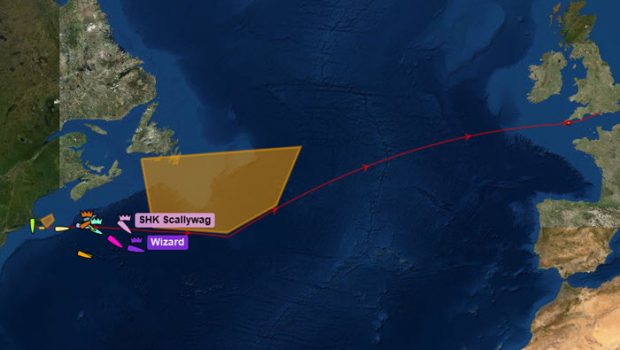

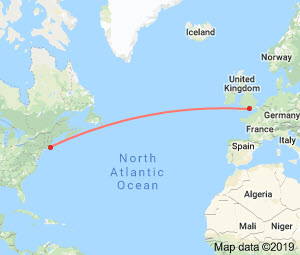

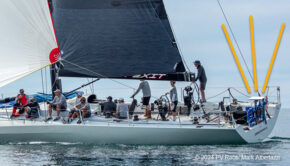
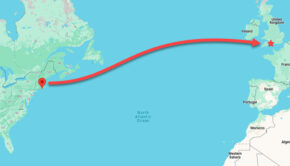
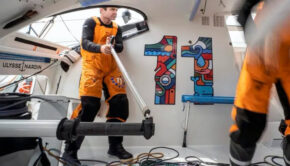
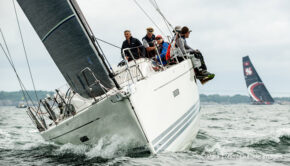
 We’ll keep your information safe.
We’ll keep your information safe.